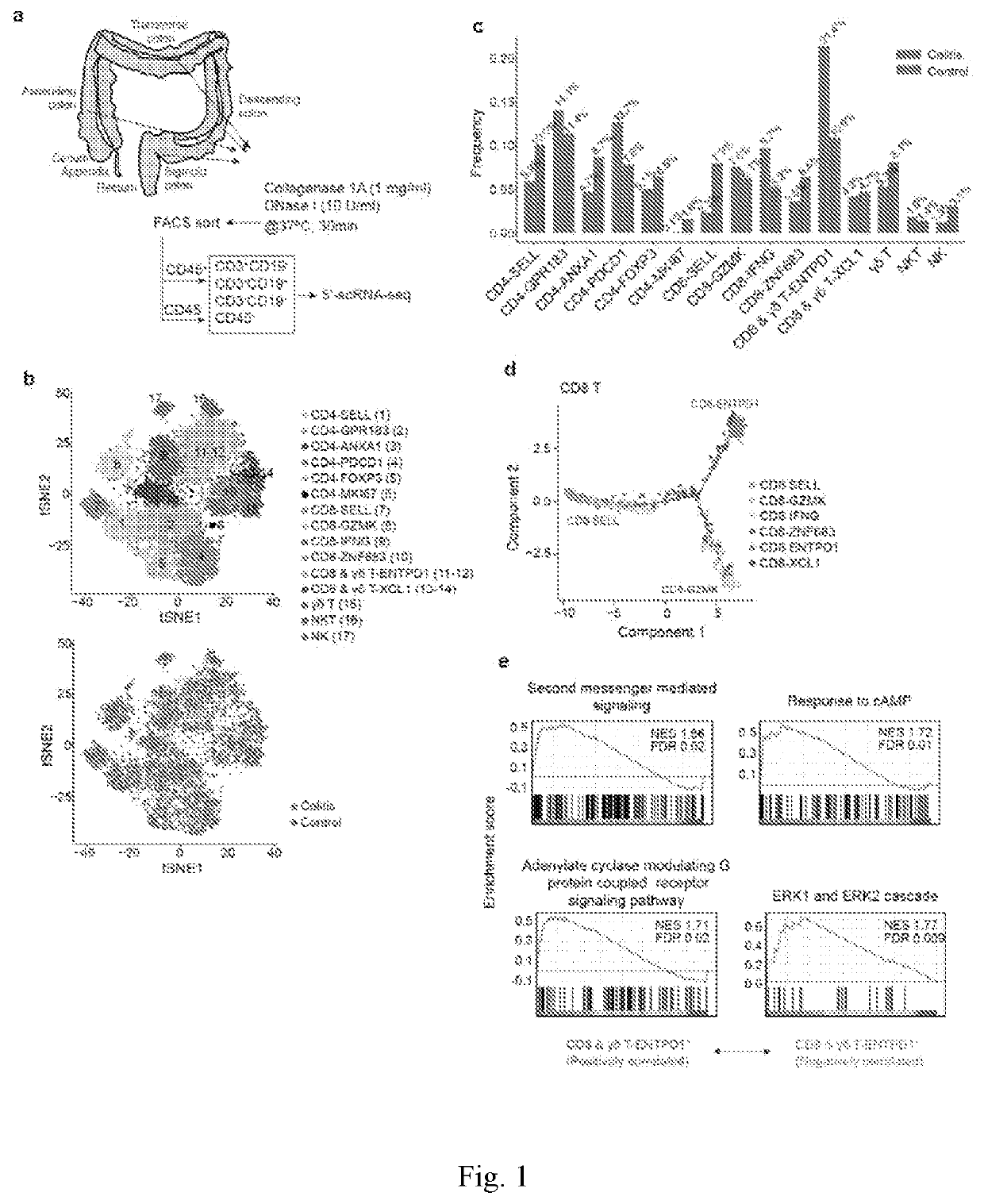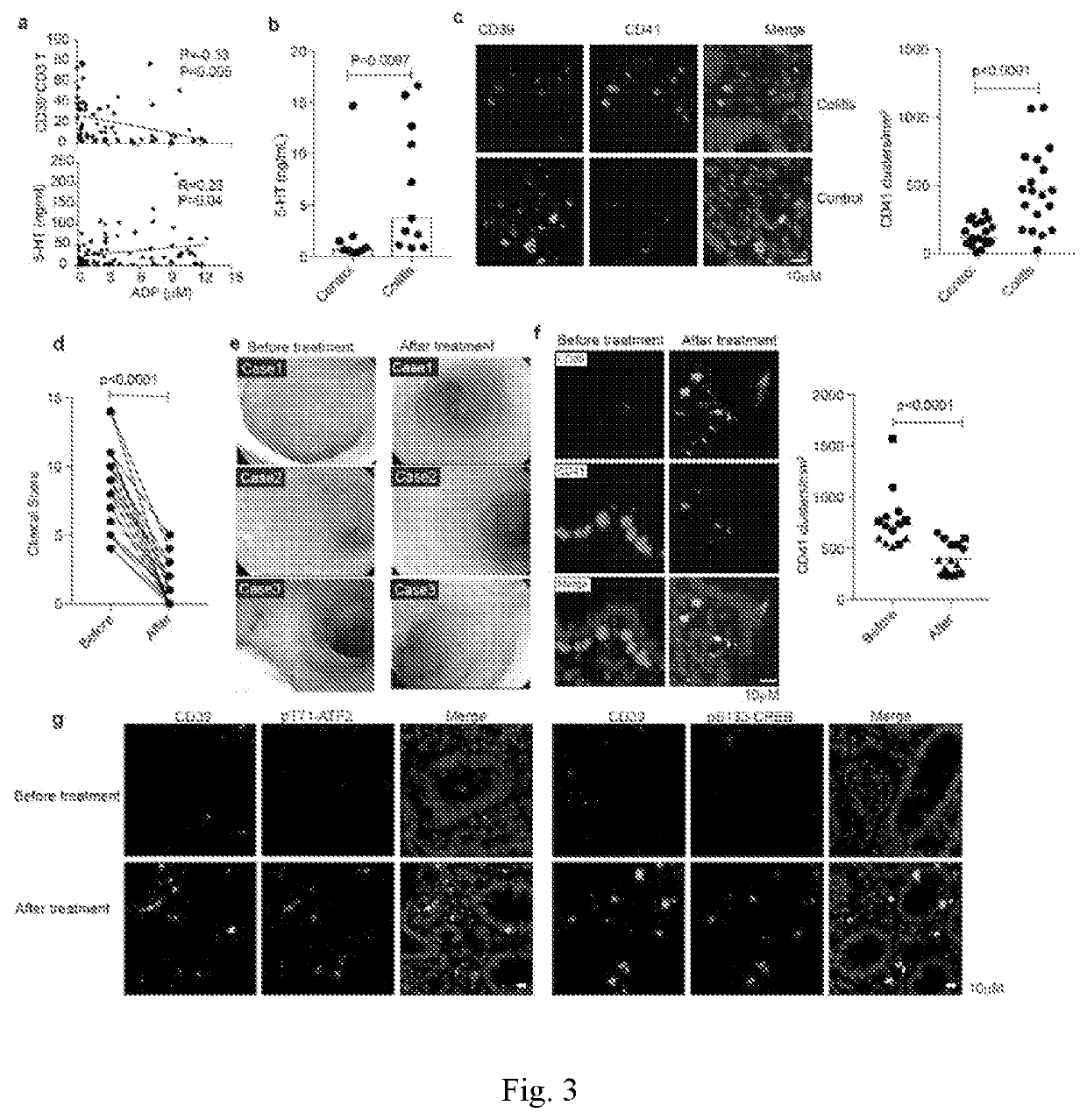Immunity mechanism and therapeutic drug for gastrointestinal diseases
- Summary
- Abstract
- Description
- Claims
- Application Information
AI Technical Summary
Benefits of technology
Problems solved by technology
Method used
Image
Examples
example 1
ll Sequencing and Bioinformatics Analysis were Performed on Cells in the Colon Mucosa of Colitis and Control Children
I. Research Plan
[0097](1) Obtain the colon mucosal tissues of control and children with non-infectious gastrointestinal diseases, and obtain single-cell suspensions;
[0098](2) After surface staining, use flow cytometry to sort four subgroups of T, B, non-TB lymphocytes, and non-lymphocytes;
[0099](3) Perform single-cell transcriptome analysis for each cell subgroup;
[0100](4) Single-cell sequencing results, analysis of the clustering characteristics of immune cell subpopulations, and establishment of the composition and transcription characteristics of colonic mucosal immune cells;
[0101](5) Through signal pathway enrichment analysis, determine the specific functional characteristics of cell subpopulations. Identify cell type-specific and highly expressed transcription factors, establish a transcription factor regulatory network through correlation analysis with gene expr...
example 2
Experiment and Evaluation of Dipyridamole in the Treatment of Colitis in Children
[0112]The following studies were performed on the colon mucosa of the patients described in Example 1, namely, children with non-eosinophilic colitis and eosinophilic colitis (67 and 23, respectively) and 28 control children. Refer to Table 3 for the patient's condition.
TABLE 3Clinical characteristics of control and patientsControlColitisEosinophilic colitisPatient group(n = 28)(n = 67)(n = 23)Age, Median5(0-13)4(1-17)3(1-12)(Range), YearFemale, n (%)13(46)24(36)8(35)Definition(1) Normal(1) Colonoscopy(1) Colonoscopyendoscopicappearing of edema,and microscopyappearance anderythema, granularity,findings similar tohistologicalnodularity, friability,Colitis, andexamination, orfollicular hyperplasia,(2) Eosinophil(2) Only a singleulcers, inflammatorycounts ≥20 at anyjuvenile polyppolyps, strictures, and / orparts of the colon in(2) Microscopyhigh power field (400findings of increasedmagnification)lymphocytic ...
example 3
The Role of Dipyridamole in DSS (Dextran Sulphate Sodium)-Induced Acute Colitis Model
Mouse
[0121]Male C57BL / 6J mice (20-22 g), six to eight weeks old, were purchased from Guangzhou University of Traditional Chinese Medicine. The mice were given regular food and water before the experiment. Weight-matched mice were used in all studies Animal research was approved by the Animal Care and Utilization Committee of Guangzhou Medical University (permit number: 2019-471) and was conducted in accordance with institutional guidelines.
DSS-Induced Acute Colitis
[0122]Mice were pretreated with dipyridamole (10 mg / kg body weight, Sigma-Aldrich) or vehicle (2% DMSO, 10% ethanol, 88% corn oil) twice a day for 3 days, and then DSS (36,000-50,000 MW), MP Biomedicals) added to their drinking water (3%) for 9 days. The control mice were given regular food and water. The mice were monitored daily and if the weight loss exceeded 20%, they were euthanized.
PUM
| Property | Measurement | Unit |
|---|---|---|
| Frequency | aaaaa | aaaaa |
Abstract
Description
Claims
Application Information
 Login to View More
Login to View More - R&D
- Intellectual Property
- Life Sciences
- Materials
- Tech Scout
- Unparalleled Data Quality
- Higher Quality Content
- 60% Fewer Hallucinations
Browse by: Latest US Patents, China's latest patents, Technical Efficacy Thesaurus, Application Domain, Technology Topic, Popular Technical Reports.
© 2025 PatSnap. All rights reserved.Legal|Privacy policy|Modern Slavery Act Transparency Statement|Sitemap|About US| Contact US: help@patsnap.com



